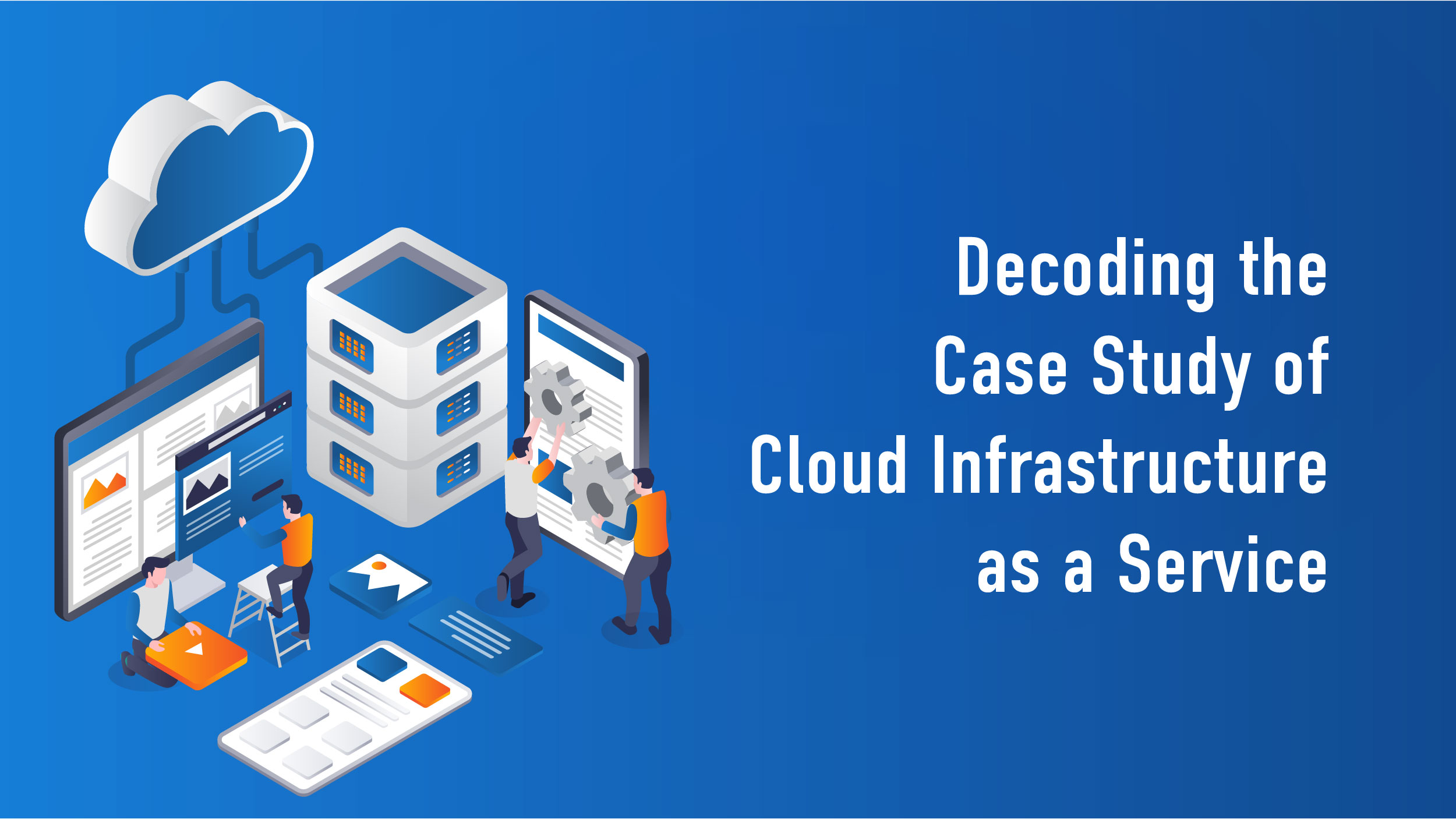As an increasing number of organizations transition to the cloud, the adoption of cloud infrastructure as a service (IaaS) solutions plays a pivotal role in fostering innovation, enhancing reliability, and streamlining IT costs. This concise introduction to cloud infrastructure as a service provides a glimpse into the technology and outlines its benefits for businesses, irrespective of size.
What is Cloud Infrastructure as a Service?
Cloud infrastructure as a service (IaaS) is a form of cloud computing service that provides essential computing, storage, and networking resources on a pay-as-you-go basis. This falls under the umbrella of cloud services, joining Software as a Service (SaaS), Platform as a Service (PaaS), and serverless computing.
In the IaaS model, the cloud provider takes on the responsibility of managing IT infrastructure components like servers, storage, and networking resources. These resources are then delivered to subscribing organizations through virtual machines accessible over the internet. This approach eliminates the need for organizations to handle the procurement, configuration, or management of infrastructure, which allows them to concentrate on software installation, configuration, and data security.
Cloud IaaS brings various advantages to organizations, including a reduction in on-premises data center maintenance, cost savings on hardware expenses, real-time business insights, and increased reliability of the underlying infrastructure. Additionally, IaaS offers the flexibility to scale IT resources based on demand and facilitates the swift provisioning of new applications.
Key players in the cloud computing arena, such as Amazon Web Services, Google Cloud, IBM Cloud, and Microsoft Azure, provide IaaS solutions. These providers take charge of managing and maintaining the infrastructure, enabling organizations to access and oversee IT infrastructure without the need for physical on-site management.
Evolution of Cloud Computing
 Amazon Web Services (AWS) played a pioneering role in shaping modern cloud computing. According to Jeff Bezos, AWS aimed to furnish application developers with dependable tools and a reliable infrastructure to build products. Subsequently, IBM (IBM Smart Cloud), Google (Google Cloud), Microsoft (Azure), and Oracle (Oracle Cloud) entered the business, broadening the spectrum of cloud computing services. Today, various types, solutions, and vendors contribute to the expansive landscape of cloud computing.
Amazon Web Services (AWS) played a pioneering role in shaping modern cloud computing. According to Jeff Bezos, AWS aimed to furnish application developers with dependable tools and a reliable infrastructure to build products. Subsequently, IBM (IBM Smart Cloud), Google (Google Cloud), Microsoft (Azure), and Oracle (Oracle Cloud) entered the business, broadening the spectrum of cloud computing services. Today, various types, solutions, and vendors contribute to the expansive landscape of cloud computing.
How Does Cloud IaaS Operate?
In the cloud infrastructure as a service (IaaS) model, a cloud service provider (CSP) oversees large data centers, typically situated globally, containing physical machines and virtualized resources. These resources include servers, virtual machines (VMs), storage, and networking services, which are made accessible to customers via the Internet. Customers pay for access to these cloud infrastructure resources based on actual usage, utilizing as many or as few services as required at any given time. The CSP is responsible for the ongoing management and maintenance of the cloud infrastructure, relieving in-house IT teams of this responsibility. IaaS enables businesses to circumvent the expenses associated with constructing, sustaining, securing, and providing climate control for on-site data centers that would otherwise house these computing resources.
Benefits of Cloud Infrastructure as a Service (IaaS)
IaaS proves advantageous for companies requiring scalability and swift provisioning. Organizations undergoing rapid growth, yet lacking the capital for hardware investments, find IaaS models particularly beneficial. It is also advantageous for companies with consistent application workloads seeking to offload routine operations and maintenance associated with infrastructure management.
Other advantages of cloud IaaS include:
- Pay-As-You-Go: Fees are calculated based on usage metrics.
- Capital Expenditure Reduction: IaaS typically involves monthly operational expenses.
- Dynamic Scaling: Quickly add capacity during peak times and scale down as needed.
- Enhanced Security: IaaS providers heavily invest in security technology and expertise.
- Future-proofing: Access to cutting-edge data centers, hardware, and operating systems.
- Self-Service Provisioning: Accessible through a simple internet connection.
- IT Resource Reallocation: Free up IT staff for more valuable projects.
- Downtime Reduction: IaaS enables instant recovery from outages.
- Speed Boost: Developers can initiate projects once IaaS machines are provisioned.
- Innovation Enablement: Integrate new capabilities and leverage APIs.
- Level Playing Field: Small and medium-sized businesses can compete with larger firms.
Challenges Associated with IaaS
While IaaS offers numerous benefits, it comes with its share of challenges. Some hurdles can be overcome with proper preparation, but others pose risks that organizations should consider before deployment.
Challenges pertaining to cloud infrastructure as a service include:
- Unexpected Costs: Monthly fees may accumulate, or peak usage could exceed expectations.
- Process Changes: IaaS may necessitate adjustments to existing processes and workflows.
- Runaway Inventory: Instances may be deployed but not properly decommissioned.
- Security Risks: While IaaS providers secure the infrastructure, businesses are responsible for hosted content.
- Limited Support: Live assistance may be challenging in certain cases.
- Complex Integration: Challenges may arise when integrating with existing systems.
- Security Risks: New vulnerabilities may emerge due to a loss of direct control.
- Limited Customization: Public cloud users may have restricted control and customization capabilities.
- Vendor Lock-In: Switching from one cloud IaaS provider to another may be difficult.
- Broadband Dependency: IaaS performance is subject to the reliability of the internet connection.
Decoding the Case Study of Cloud Infrastructure as a Service
 Typical use cases for IaaS encompass a variety of business needs:
Typical use cases for IaaS encompass a variety of business needs:
- Testing and Development: DevOps teams leverage IaaS to swiftly establish and dismantle environments for software development and testing. This accelerates the application development lifecycle, enabling quicker market entry.
- Hosting Web Applications: IaaS solutions furnish the entire infrastructure essential for supporting web applications, encompassing servers, storage, and networking resources.
- High-Performance Computing (HPC): IaaS is well-suited for compute-intensive workloads such as financial modeling, artificial intelligence, machine learning, scientific computations, and other scenarios requiring substantial short-term processing power.
- Big Data Analytics: Cloud infrastructure as a service provides the computational and processing capabilities necessary for manipulating and analyzing exceptionally large datasets, making it an apt choice for big data analytics.
- Cloud Storage, Backup, and Recovery: Shifting data storage to IaaS infrastructure proves cost-effective and liberates IT teams from the management of on-site data stores. IaaS facilitates efficient cloud storage, backup, and recovery solutions.
Closing Thoughts
Cloud infrastructure as a service (IaaS) is a powerful cloud computing service that offers organizations the ability to access and manage essential computing, storage, and networking resources on demand. With IaaS, businesses can reduce the burden of maintaining on-premises data centers, save costs on hardware investments, and gain the flexibility to scale resources based on their needs.


































